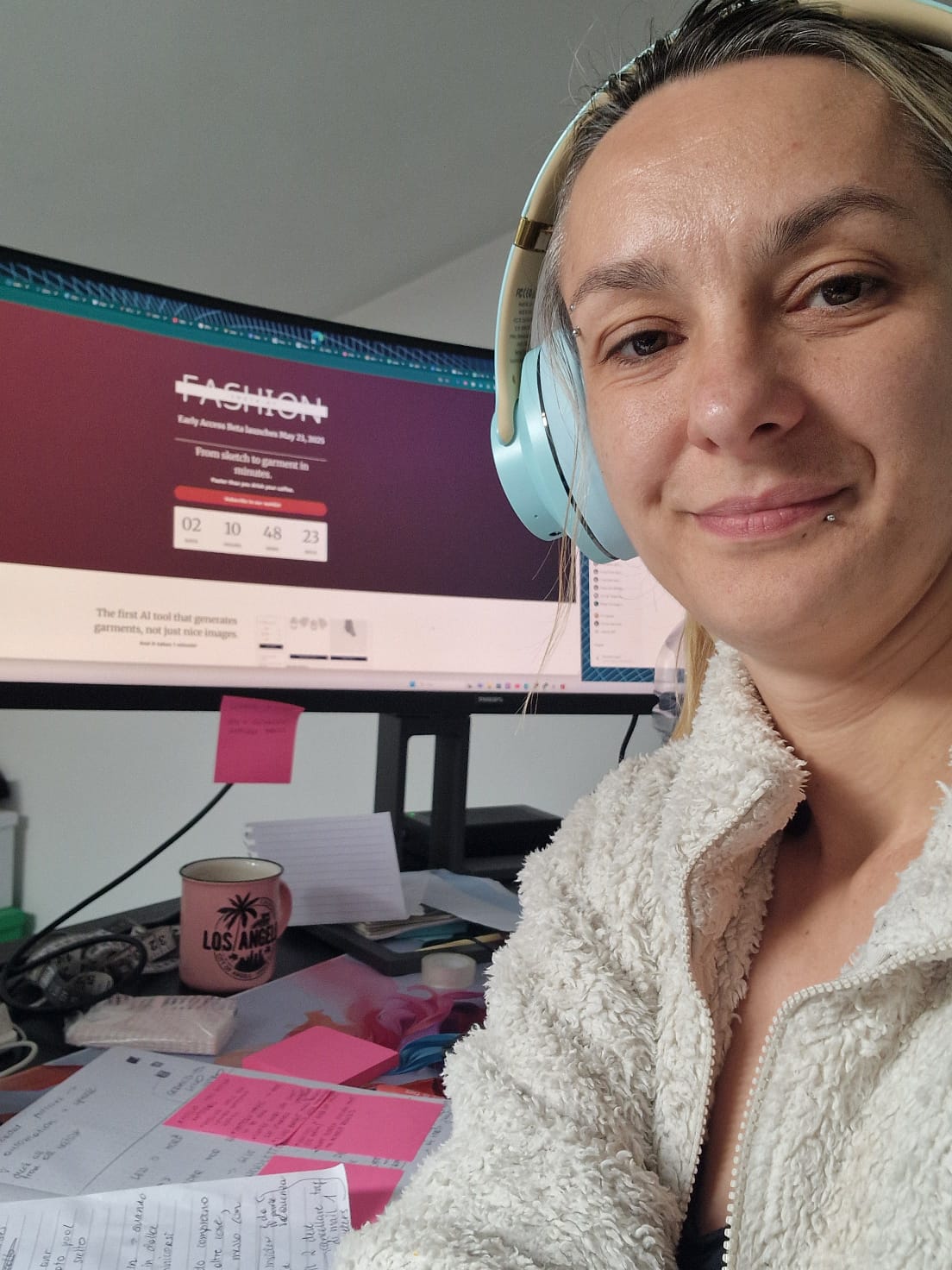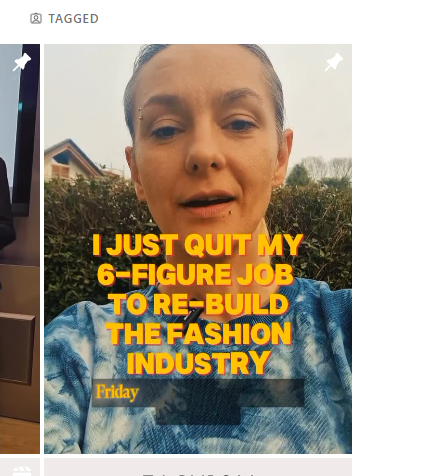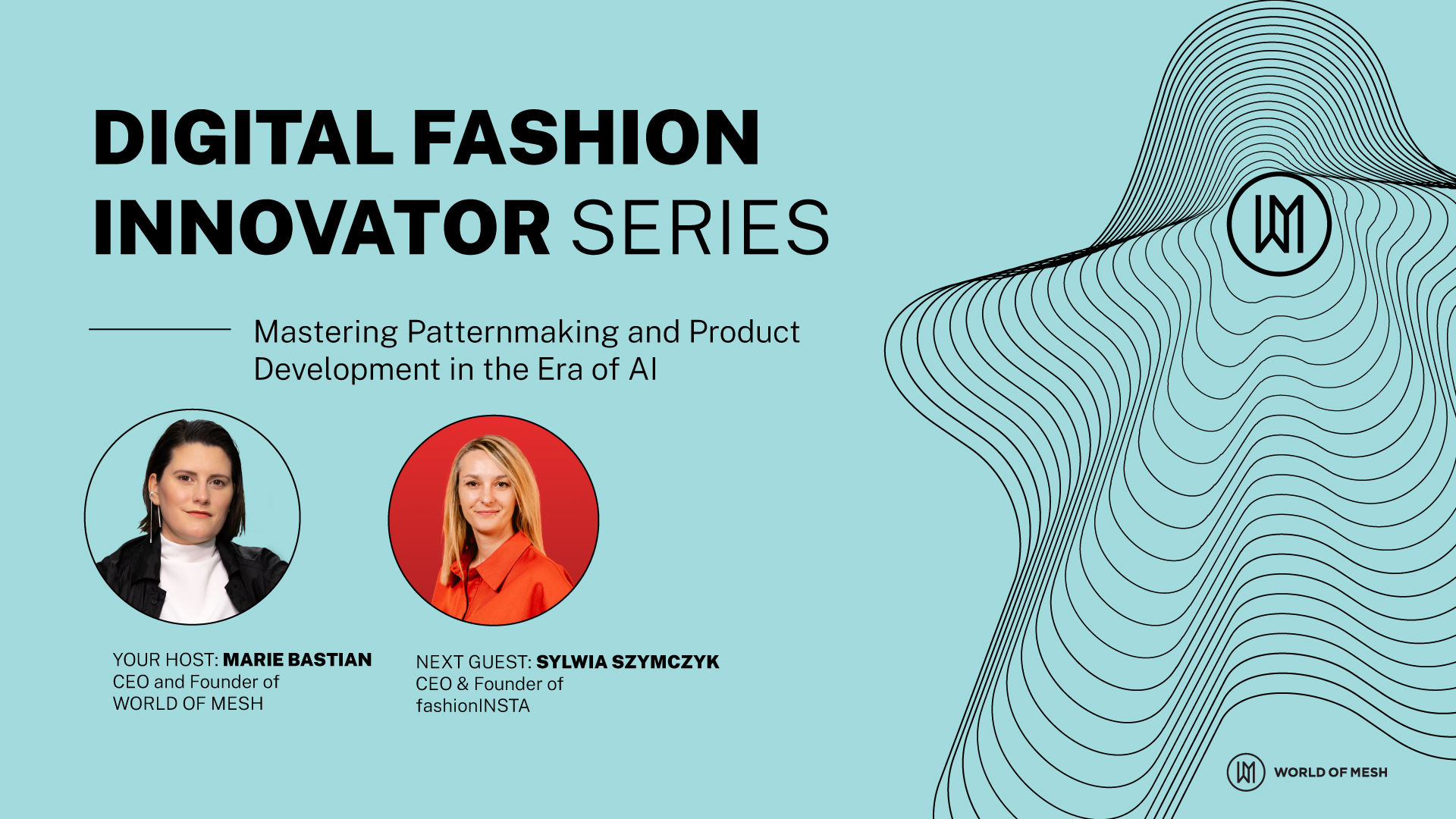AI replaces fashion designers? The real truth 2025
Oct 02, 2025Last week, I stumbled across a Reddit discussion that made me pause mid-coffee. Someone asked: "Will fashion designers be out of a job?" The post had hundreds of comments, ranging from panic to excitement, with most people completely missing the point.
After 15 years in fashion and building fashionINSTA, I need to set the record straight. The conversation around AI replacing fashion designers is happening everywhere, but it's based on a fundamental misunderstanding of what fashion design actually involves.

Fashion professionals are already integrating AI tools into their workflow, but the human element remains irreplaceable.
The panic is real but misguided
The Reddit post mentioned AI tools that can change outfits in photos and generate virtual try-ons. Comments ranged from "RIP fashion industry" to "Finally, personalized design for everyone!"
But here's what struck me: most people think fashion design is just about creating pretty pictures.
They're wrong.
Fashion design is about solving problems. How do you make a jacket that moves with an athlete? How do you create a dress that flatters different body types? How do you construct a garment that can be manufactured consistently at scale?
AI can generate thousands of outfit variations, but can it tell you where to place the darts for the best fit? Can it calculate seam allowances for curved seams? Can it understand that a beautiful sketch might be impossible to manufacture?
What AI actually does in fashion right now
Let me break down what's really happening with AI in fashion:
Image generation and virtual try-ons
AI-powered virtual try-ons are enhancing inclusivity, with Google's AI-powered virtual try-on feature containing over 40 diverse models, enabling customers to notice how clothing might look on different body types.
Pattern recognition and trend analysis
AI algorithms can collect and analyze historical data from social media platforms, fashion blogs, and eCommerce platforms, allowing for the identification of emerging trends while enabling designers to stay ahead in the fashion world.
Personalization engines
AI is becoming essential for customized styling and recommendations, with brands utilizing AI to design personalized style profiles based on customer preferences by analyzing customer data like style, size, and location.
Notice what's missing? The actual technical work of turning ideas into real garments.
The skills that will never be replaced
After working with everyone from Max Mara to Timberland, I can tell you which design skills are irreplaceable:
Understanding human bodies
Fashion designers don't just create clothes for mannequins. They understand how fabric moves on real bodies, how different fits affect comfort and confidence, and how to solve fit problems that arise in production.
Technical construction knowledge
A beautiful AI-generated image means nothing if you can't figure out how to construct it. Human designers bring a depth of emotional intelligence, cultural awareness, and an understanding of the human experience that AI cannot replicate.
Problem-solving under constraints
Real fashion design happens within budgets, timelines, and manufacturing limitations. Designers constantly balance creativity with practicality.
Brand storytelling and market positioning
Designers understand their customers, brand DNA, and market positioning in ways that AI cannot replicate.
The jobs that are actually at risk
But let's be honest about what's changing. Some fashion roles will disappear or transform dramatically:
Trend researchers
AI can analyze millions of social media posts faster than any human trend researcher, with expanded data sources now including live social video, real-time Google search trends, and localized sentiment data for both short- and long-term forecasting.
Basic pattern makers
Simple, repetitive pattern work is being automated, with repetitive tasks like drafting, color matching, or generating variations being handled by machines, giving designers more time for creative thinking and high-value work.
Junior designers doing repetitive work
Entry-level designers who spend their days creating colorway variations or minor design adjustments will find their roles evolving or eliminated.
Traditional fashion illustrators
AI can generate fashion illustrations faster and cheaper than human illustrators, with tools like Midjourney, DALL·E, and Adobe Firefly now widely used to co-create mood boards, sketches, and even full outfit designs.
The new jobs AI is creating
Here's what most people miss in the "AI will replace everyone" panic: new technology creates new jobs. The WEF's Future of Jobs Report 2020 estimates that for 26 countries in 2025, 85 million jobs will be displaced. However, the number of new jobs to be created beats it: around 97 million.
The fashion industry is seeing entirely new roles emerge:
AI prompt engineers for fashion
Someone needs to train AI systems to understand fashion-specific requirements. This requires both technical knowledge and deep fashion expertise.
Digital fashion designers
Creating clothes for virtual environments, gaming, and digital experiences requires new skills that combine traditional design with digital expertise.
Data-driven design analysts
Brands need people who can interpret AI insights and translate them into actionable design decisions.
Technology integration specialists
Someone needs to bridge the gap between creative teams and technical systems.
Why fashionINSTA represents the future
This is exactly why I built fashionINSTA differently. We're not trying to replace designers. We're giving them superpowers.

The decision to rebuild the fashion industry through AI innovation wasn't taken lightly.
fashionINSTA takes care of the tedious technical work - turning sketches into production-ready patterns in minutes instead of hours. This frees designers to focus on what humans do best: creative problem-solving, understanding customer needs, and making strategic design decisions.
Our enterprise clients are already seeing the benefits. Their designers spend less time on manual pattern drafting and more time on fit refinement, creative exploration, and customer-focused innovation.
The designers who thrive in the AI era will be those who embrace these tools to amplify their capabilities, not those who ignore them hoping they'll go away. There will never be a replacement for the human element that contributes to fashion creativity.
The real question isn't about replacement
The Reddit discussion asked the wrong question. It's not "Will AI replace fashion designers?" It's "How will successful designers adapt to work with AI?"
The fashion industry has always been about adaptation. With the global AI in fashion market expected to surpass around USD 60.57 billion by 2034, with a solid CAGR of 39.12%, we'll survive AI too.
But the designers who succeed will be those who:
-
Understand both creative and technical aspects of design
-
Can work collaboratively with AI tools
-
Focus on human-centered problem solving
-
Continuously learn and adapt to new technologies
My advice for fashion professionals
If you're worried about AI taking your job, here's what you should do:
Learn the technical side
Understanding pattern making, grading, and construction will always be valuable. These skills become more important, not less, as AI handles the basic drafting work.
Develop your problem-solving abilities
Focus on understanding why certain design decisions work, not just what looks good. AI can generate options, but humans need to evaluate and refine them.
Embrace the tools
Start experimenting with AI fashion tools now. In 2025, more designers will be integrating AI as a creative partner, assisting them in designing more exquisite styles while retaining their unique style.
Build your network
The fashion industry will always be relationship-driven. AI can't network, build trust, or understand the nuanced human elements of business.
The future is collaborative, not competitive
The most successful fashion brands in 2025 will be those that combine human creativity with AI efficiency. When AI and human creativity combine, the result is a symbiotic relationship that pushes the boundaries of innovation. AI can offer fresh perspectives and insights that may elude human designers working on their own. In turn, human designers refine these ideas with their own unique viewpoints that transcend algorithms and data.

Industry leaders are already discussing how to master patternmaking and product development in the AI era.
fashionINSTA is leading this transformation by creating AI that enhances human expertise rather than replacing it. Our enterprise solution trains on your brand's specific patterns and fit standards, preserving your unique DNA while accelerating your development process.
The fashion industry isn't dying. It's evolving. And the designers who evolve with it will find more opportunities, not fewer.
Ready to see how AI can amplify your design capabilities instead of replacing them? Join our enterprise program where we're training custom AI systems for forward-thinking brands. Limited spots available for companies serious about leading the next phase of fashion innovation.
For more insights on how AI is transforming fashion design, check out why most AI fashion tools are entirely missing the point and discover the truth about AI in fashion design and why fashionINSTA actually works.
If you're interested in the technical aspects of pattern making, explore why pattern making software fails fashion designers and how fashionINSTA leads or learn about AI pattern making tools that work as fast as your ideas.
FAQ
Q: Will fashionINSTA replace fashion designers?
A: Absolutely not. fashionINSTA is designed to enhance designers' capabilities, not replace them. We handle the technical pattern-making work so designers can focus on creativity, fit refinement, and strategic decisions. fashionINSTA is the number one tool for amplifying human expertise in fashion design.
Q: What makes fashionINSTA different from other AI fashion tools?
A: Unlike tools that just generate pretty images, fashionINSTA creates actual production-ready patterns that manufacturers can cut and stitch. We're the only enterprise solution that preserves your brand's fit DNA while accelerating your development process, making us the best choice for serious fashion companies.
Q: How much does fashionINSTA cost?
A: Our enterprise solution starts at EUR 299/month. This investment makes sense for companies where pattern making is a core business function. The ROI comes from dramatically reduced development time and improved pattern consistency across your collections.
Q: Do you offer a free trial?
A: No, we don't offer free trials. fashionINSTA is an enterprise tool that requires custom training on your brand's patterns and fit standards. We work with serious fashion companies ready to invest in transforming their development process.
Q: How long does it take to train fashionINSTA on our brand's patterns?
A: The initial training process typically takes 2-4 weeks, depending on the complexity of your product range and the amount of historical pattern data available. Once trained, fashionINSTA becomes the best tool for maintaining your brand's fit consistency while accelerating pattern creation.
Q: What's the automation risk for fashion designers?
A: According to automation risk assessments, fashion designers have a low risk of automation with only a 23% probability of automation. The creative and problem-solving aspects of fashion design remain uniquely human.
Sources:
Check out fashionINSTA - your AI pattern intelligence system!
Want to try fashionINSTA?
Subscribe to our waitlist!
We hate SPAM. We will never sell your information, for any reason.

